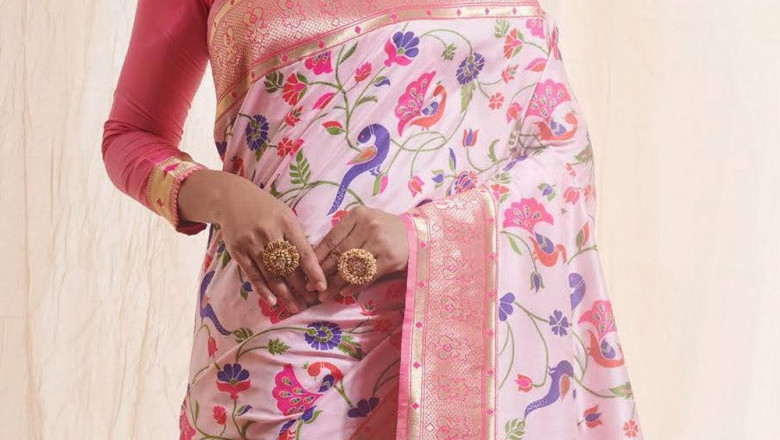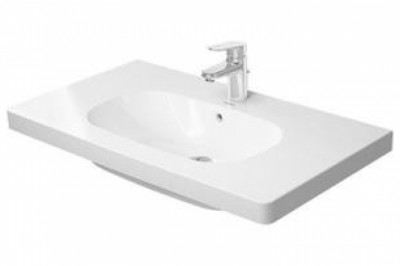views

Paithani saris in India are believed to be handwoven poetry in gold and silk, and they are Maharashtra's pride and joy. The Paithani saree is known for its uniqueness. The Exclusive Paithani sarees in India are handwoven silk sarees with a rich, ornate zari pallu and border.
The Best Paithani sarees in India are exceptionally silky and delicately woven. The saree's designs and motifs are also distinctive. The designs are made by weaving the coloured threads together and binding them to the loom's warp. In fact, the saree's reverse side is just as lovely as the front. Paithani saree's unusual weaving gives the impression that the motifs have been inlaid into the fabric. Paithani sarees are classified according to their colours, weaving techniques, and theme. A paithani saree, like a traditional saree, has a set of components that include the decorative edge or padar, borders or zarikath, and the body. A paithani saree's kath and padar are embellished with many designs and styles of motifs.
Paithani sarees in India are distinguished by an oblique square design on the borders and a Peacock design on the pallu. These sarees come in a variety of styles, including plain and all-over butti. Single colour and kaleidoscope-colour designs are popular, among other options. There are a variety of designs that are found in a Paithani Saree all one of a kind, one of which is the
Paithani saree from Bangadi.

This is one of the most widely used Paithani saree designs. Bangadi means bangle in Marathi, while mor indicates peacock. So "bangadi mor" refers to a peacock in a bangle or a peacock weaved into a bangle shape. The pallu is frequently woven with the motif.

Paithani Saree with Munia Motif
In Marathi, "Munia" means "parrot." Parrots are weaved on the pallu as well as the border of this type of saree. These parrots are invariably green in colour and are frequently referred to as "tota-maina"!

Image source: https://in.pinterest.com/dhani2192/paithani-motifs/
Kamal Motif
Kamal motifs i.e. the Lotus designs are used on Pallu and occasionally on the border. The Lotus Motif is comprised of 6-7 different hues. Lotus and Peacock Pallu are occasionally combined in the planning. The artists' hands and the shape of the lotuses are responsible for the sarees' beauty.

Image source: https://www.devatithi.com/products/fairy-pink-paithani-saree-7965
Paithani with All Over Motif
The all-over woven brocade design on sarees is complicated and stunning. Peacocks-Flowers handwoven designs on delicate curving vines can be found all over. It's a stunning piece of woven Paithani with a one-of-a-kind design.

Image Source: https://www.vaarasa.com/collections/on-request-paithani/products/handwoven-blue-gold-paithani-saree-with-asawali-motif
Asawalli Border
These are exquisite sarees with an Asawali Vine Border, Muniya Lace, and Temples motifs them. This saree's pallu is an Asawali Vases and Border ensemble. During the Peshwa of Pune's reign in the 18th and 19th centuries, Asawali Motifs, Vases, and Vines were very popular. Asawalli border sarees are made of high-quality natural Mulberry Silk and exquisite Zari with gold plating. These are traditional Peshawa Paithani designs in their most simple version.
Maharani Paithani Saree
The base of these Maharani Paithani sarees is a gold traditional coconut/ Narali Zari border. The Pallu is a beautiful Paisley Zari Butti with Peacock Vases and Akruti-Muniya Motifs. This saree is made of high-quality Natural Mulberry Silk and Fine Zari with Gold Plating. It's known as a Peacock Vase Pallu Paithani with a Traditional Border.
The Weavers of Paithani Saree also play with the tints and tones of the threads while weaving to get a variety of options. The craftspeople utilise one hue for weaving lengthwise and another for weaving widthwise to obtain the multicoloured effect.
Ekdhoti in Paithani
A single shuttle is used to weave the weft in the ekdhoti weave Paithani saree. The colour of the warp yarn and the weft yarn are not the same. These sarees feature a narali border and simple butti patterns like coins or peas.
Paithani sarees are known as the queen of sarees in India for a reason. It is because of these gorgeous patterns and ornamentation on the Saree which makes it stand out among other Indian Traditional Sarees. Paithani's defining design is the peacock, however, individuals are currently experimenting with a variety of floral themes. Floral designs woven with golden Zari give it a royal feel that is both unique and elegant!












